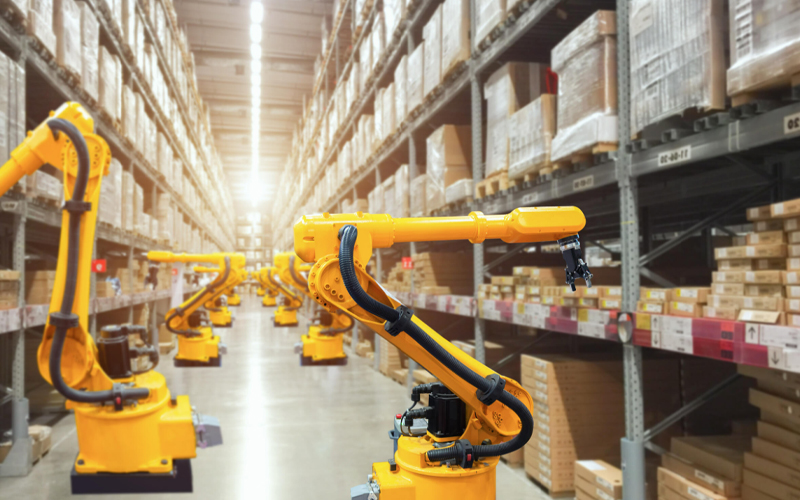The medical industry is transforming for better patient care and research and development. Generative AI in healthcare helps augment medical processes helping doctors deliver better patient care, tailored treatments, and effective outcomes.
Statistics show the trust bestowed on its potential and capabilities. GenAI in the medical imaging market stood at USD 1.9 billion in 2023 and is set to reach USD 17.9 billion by 2030 at a CAGR of 37.8%.
This article explains the benefits, applications, challenges, and ethical concerns of GenAI in medical imaging and patient care.
Benefits of GenAI in medical imaging and patient care
From accurate diagnosis to faster R&D, GenAI is helping medical professionals in several areas directly and indirectly:
High accuracy of diagnosis
GenAI provides medical professionals with additional visual cues through denoising, realistic imaging, and reconstruction techniques. They can use this information to analyse X-rays, MRIs, ultrasounds, CT scans, and DXAs.
The technology compensates for the shortage of data by annotating lifelike images artificially, helping professionals diagnose accurately. Processes such as Generative Adversarial Networks (GANs) and Variational Autoencoders (VAEs) produce images that mimic and enhance patient scans.
Personalised treatment
GenAI analyses enhanced images and leverages deep learning to generate personalised treatment plans. The model predicts disease progression, recommends treatment options, and simulates the outcomes. Healthcare professionals can make informed decisions before making targeted interventions for better patient care.
Medical professionals can use GenAI to analyse pharmacogenomic data and predict the medication responses of each patient. They can prescribe drugs based on the patient’s genetic factors with minimal adverse effects.
Better education and training for professionals
GenAI produces realistic images for medical students and trainees in a safe and controlled environment to practice and diagnose various conditions. This helps in faster student learning, making them better equipped for patient care.
Faster research and development
Researchers can use GenAI to produce synthetic data with predefined characteristics for faster research and development. Novel algorithms and techniques expedite pattern identification and biomarkers for faster drug and vaccine discovery, and better medical imaging and patient care. Other uses of GenAI in R&D include:
- Predictive analytics: Use historic medical data with GenAI to predict potential outcomes and create strategies for research projects.
- Better resource utilisation: Automate tasks and address constraints to optimise available resources for higher performance.
- Data processing and document summarisation: Analyse and extract extensive medical data and review documents for administrative purposes and medical literature.
Applications of GenAI in medical imaging
GenAI impacts medical imaging through advanced techniques such as Convolutional Neural Networks (CNN) and other deep learning frameworks. Several ways in which it enhances patient care through better imaging are:
Image synthesis
With the capability to synthesise realistic images of organs or tissues, GenAI augments educational and diagnostic imaging. By training GANs and VAEs on large datasets, you can extract images that resemble the patient scans. These images can act as training data to further improve the imaging algorithms.
Image enhancement and reconstruction
GenAI can reduce the noise in medical images for a clear and more informative visual. This process enhances the visibility of subtle details, helping doctors, radiologists, and clinicians deliver better patient care. It can also reconstruct missing or damaged parts of the image for a complete view and better analysis.
Image segmentation
Isolating, segmenting, and enhancing specific areas of interest in a medical image (MRI or CT scan) is crucial for a better prognosis. Without GenAI, this can be a manual and time-consuming task. GenAI can accurately isolate and enhance abnormalities, tumours, organs, and tissues for disease monitoring, treatment planning, and surgical intervention.
Challenges and ethical concerns of GenAI in medical imaging
To leverage the full benefit of GenAI in medical imaging, one must deal with the challenges and ethical concerns such as responsible data handling and bias. Typical challenges and concerns include:
- Data bias and generalisation: A GenAI model’s output depends on the quality of the training data. If the training data has a bias or a lack of diversity, the medical images may reflect these problems. Training the GenAI model requires diverse data for an equitable outcome.
- Privacy and reliability: Handling data privacy through a robust validation process for reliability and safety becomes crucial in real-time medical imaging for emergency treatments and critical care.
- Ability to interpret and explain: The GenAI model output must provide a rationale behind the decision or recommendation for healthcare professionals and patients to gain confidence.
- Incorporation in clinical processes: GenAI tools must seamlessly integrate with existing systems, communications, and electronic health records for user-friendliness, compatibility, and reliability.
How can Infosys BPM help?
Infosys Topaz is an AI-first platform that uses GenAI technology to accelerate value creation and evolution in medical imaging and patient care. The tailormade solution ensures AI ethics while revolutionising operations.
Read more about the generative AI platform at Infosys BPM.








